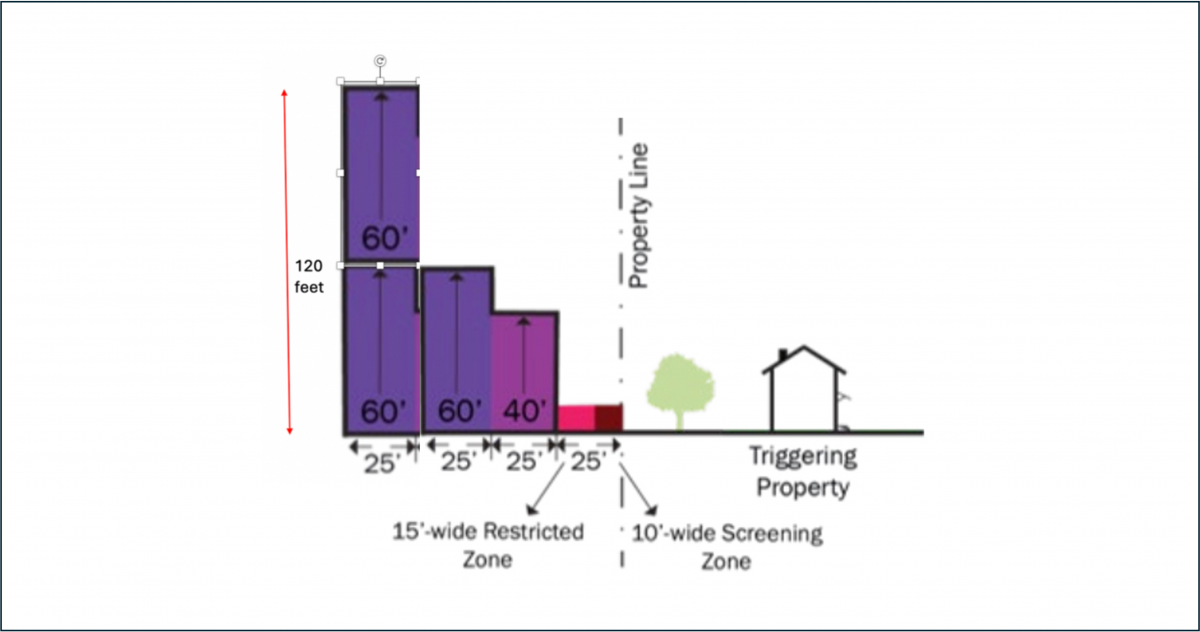
KEY POINTS:
- The Austin City Council is proposing to greatly reduce compatibility standards, which control the distance between huge buildings and single-family homes
- In some cases, the proposal would allow 90-foot buildings just 75 feet from existing homes
- To support their plan, city officials are misleading Austinites by citing inaccurate data
Years ago, a community task force made up of developers and neighborhood and environmental representatives proposed regulations to promote the compatibility of new development or redevelopment with single-family homes. They were adopted by the Austin City Council and became known as compatibility standards.
The current council now proposes to dismantle them.
The council’s proposal exempts offices (NO, LO), retail (LR), and apartments (MF-1, MF-2, and MF-3) with a height of 40 feet or less from all compatibility standards. These office, retail, and apartments adjoining single-family properties are required to have only a 10-foot rear setback to single-family property lines and a side setback of just five feet.
Forty-foot tall buildings (without NO, LO, or LR zoning) with higher zoning (GO, GR, CS) would have to be separated from single-family properties by a no-build 15-foot or 25-foot buffer. At 50 feet from a residential property line, a 60-foot-tall structure would be allowed. That height limit is currently 40 feet. At 75 feet from the residential property line, compatibility control over the height of a building ends, meaning that at that distance a 90-foot-tall building could be built under the commercial (CS) zoning districts using the city’s density bonus program.
Significantly, developers may also request site-specific amendments (further compatibility reductions) to this new ordinance:
City Council has the full discretion to modify or waive elements of compatibility following a site-specific zoning amendment process with notice and protest rights.
Compatibility waivers would go to the Land Use Commission before the city council. The Board of Adjustment currently hears these cases.
The City Isn’t Honest About “Peer City” Data
The city’s staff is consistently saying that Austin is out of step with “peer” cities as far as compatibility goes. In the staff backup, the city has a chart showing that Dallas allows 90 feet of height 50 feet from a single-family lot line. In reality, the Dallas ordinance uses a residential proximity slope to determine compatibility height. In Dallas, a 90-foot-tall structure would have to be 271 feet (not just 50 feet) from a residential lot line.
The City of Austin is misleading local residents, because the compatibility that ends at 50 feet in Dallas is for commercial structures next to apartment buildings.
Existing Unused Residential Capacity Dwarfs Gain From Compatibility Reduction
The city argues that compatibility is the ordinance that most greatly handicaps the production of housing. It has even produced a document claiming 63,000 more units of housing could be built (not would be built) with reduced compatibility. What the city has failed to calculate is the number of units that could be built with existing zoning and compatibility. A sophisticated but conservative estimate reveals that the current unused zoning capacity is 1,375,340.88 units, or 2,183% the claimed gain from reducing compatibility. If even a quarter of the unused capacity is used, it adds up to 655% of what city officials hope to gain from creating an incompatible mix. In other words, this is not about gaining housing units, but about reenvisioning Austin as a dense city where buildings compete for sunlight.
You can read the draft ordinance released on May 3 here, and you can view the current compatibility standards here.



